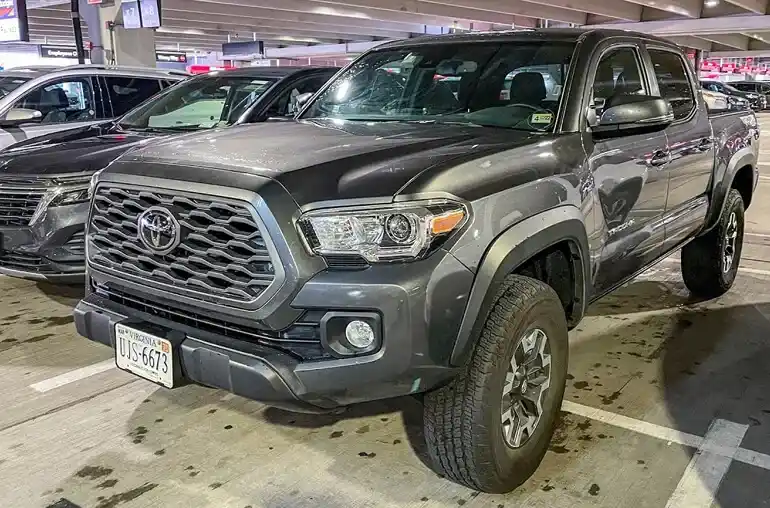

The 2021 Toyota Tacoma’s Safety Evaluation: What You Need to Know
Introduction:
The 2021 Toyota Tacoma, a popular choice in the truck market, has garnered attention for its commendable crash prevention features and respectable crash test ratings. However, like any vehicle, it’s not without its flaws. In this comprehensive review, we’ll delve into the strengths and weaknesses of the 2021 Toyota Tacoma’s safety features, with a particular focus on its performance in small overlap crash tests.
Crash Test Ratings:
When it comes to crash test evaluations, the 2021 Toyota Tacoma displays notable strengths in various categories. It has received high ratings for small overlap front: driver, moderate overlap, side, roof strength, and head restraints and seats. However, a closer look reveals a significant weakness—the small overlap front: passenger side crash test rating, which is categorized as only “acceptable.”
Intriguingly, most subcategories within the small overlap front: passenger side test yielded good ratings, except for one critical aspect—passenger injury measures, particularly the lower leg/foot region. This specific rating is far from satisfactory, falling into the “poor” category, which is the lowest rating possible. Additionally, the passenger restraints and dummy kinematics were rated as “acceptable.”
Understanding Small Overlap Crash Tests:

To comprehend the significance of these crash tests, it’s essential to delve into their purpose and methodology. Small overlap front driver and passenger tests assess how well a vehicle’s airbags, seatbelts, and safety cages perform when the front left or right corner of the vehicle collides with an obstacle, such as a tree or another car, at a speed of 40 mph.
These tests were introduced by the Insurance Institute for Highway Safety (IIHS) because car manufacturers were previously neglecting the safety of the front corners of vehicles. Consequently, injuries and fatalities in accidents involving these areas were alarmingly high. Initially, the IIHS focused solely on the driver’s side, prompting improvements in driver-side safety measures. However, these advancements often did not extend to the passenger side, leaving it significantly more vulnerable.
Importance of Small Overlap Tests:

The small overlap front driver and passenger tests play a pivotal role in assessing a vehicle’s safety features. They evaluate the effectiveness of airbags, seatbelts, and safety cages, which are designed to withstand crashes. Safety cages, in conjunction with crush zones, distribute crash energy to minimize its impact on vehicle occupants. These crush zones are typically located in the middle of the car’s front, making it crucial to evaluate the vehicle’s outer edges as well.
During small overlap crashes, the force is concentrated on the front corners of the vehicle, including the wheel wells. If these areas fail to absorb the energy effectively, they can intrude into the vehicle’s interior, resulting in injuries to both the driver and passengers.
In summary, these tests assess how well the safety cage performs when the crash force is not distributed to the designated crush zones. Given the importance of safety in today’s automotive landscape, understanding these evaluations is paramount for prospective buyers.
Choosing a Midsize Pickup:
Considering the significance of crash test ratings, especially in the midsize pickup truck segment, it’s essential to explore alternatives if the 2021 Toyota Tacoma’s rating gives you pause. Unfortunately, there are limited options with consistently high crash test ratings in this category. However, for those willing to explore larger pickup trucks, the Ram 1500 crew cab emerges as a compelling choice.
Conclusion:
In the realm of midsize pickups, the 2021 Toyota Tacoma shines in various safety categories, with its primary weakness residing in the small overlap front: passenger side crash test. While no vehicle is perfect, understanding the nuances of crash test ratings and their implications is pivotal for making an informed purchase decision. Whether you opt for the Toyota Tacoma or explore other options, prioritize safety features and ratings as a top consideration in your truck-buying journey. Safe driving remains paramount, regardless of the vehicle you choose.
Add a comment Cancel reply
Categories
- Biography (4)
- Car Reviews (31)
- Car Tips (53)
- Classic Cars (45)
- Net Worth (12)
- Transportation (19)
Recent Posts
Related posts


Top 5 Reliable Car Dealerships in Lagos: Your Ultimate Guide

How to Buy a Tokunbo Car in Nigeria Without Getting Scammed








